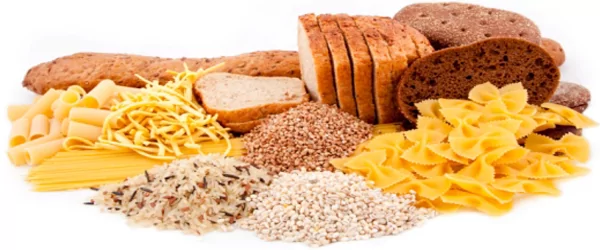Carbohydrates otherwise known as carbs have really gotten a bad rep over recent years. Being attacked by the fitness and dieting sectors alike. The truth is these attacks are unjustified as carbs should be the cornerstone of any nutrition plan.
Carbs are the body’s preferred source of energy which makes them essential for athletes and strength trainers alike and are needed for muscle building.
The Truth About Carbs
Upon digestion carbs are broken down into glucose or converted to glycogen to be stored. The glucose enters the blood stream as blood sugar to provide food to the brain and to the nervous system to keep you mentally alert.
Glycogen is the body’s fuel and is stored in the muscles and kidneys. Once the glycogen stores are filled the excess is stored as fat. When muscles need the energy glycogen is broken down to release energy in the form of glucose.
However when glycogen levels are depleted due to prolonged periods of exercise the body begins to use protein as an energy source. This diverts the valuable proteins away from its primary function of muscle repair and maintenance which is detrimental to muscle building.
Fat is another energy source but it is the least available to the body and is dependent on the presence of carbs to trigger its metabolism. Therefore without sufficient carbs in the body fat cannot be burned and remains stored.
Therefore sufficient carbs ensures that protein is preserved and that fat can be mobilized effectively into energy when additional fuel is required.
Sources
Carbs fall into two main categories; simple and complex.
Simple contains simple sugars such as fructose and glucose which are commonly found in fruit, honey, refined sugars. Simple carbs can provide a quick release of energy to the body. This can useful post exercise.
Complex carbs occur in cereals and grains. Complex carbs are slower to digest and as such act as slow release fuels for the body and are satisfying and filling to eat. Complex carbs also contain soluble and insoluble fibers which are essential for healthy digestion.
Maintaining a high carb diet is essential for everyone, especially for strength trainers and athletes.
Many carb sources also provide other nutrients, fruits and veg for example provide vitamins A and C. Whereas simple carbs really only provide an excess of calories, with little to no nutrients. This leads to excess body fat. Therefore you maybe don’t need to cut carbs; you may just need to trade the bad for the good.
When selecting your carb sources a focus should be made on fiber. There are two types of fiber; soluble and insoluble. Soluble occurs in oatmeal, nuts and seeds, and most fruits. Insoluble fibers are found in whole wheat bread, barley, brown rice and most veg.
Benefits
By consuming sufficient carbs in the diet, protein is prevented from being used as energy. This means it can be used on repair and growth of muscle.
Glycogen stores are stocked and ready to be used which is important for energy for you work-out.
Low Carb Diets
Low carb diets can increase the risk of problems such ketosis, constipation or diarrhoea, halitosis, headache and general fatigue. A low carb diet can increase the protein load on the kidneys and a loss of minerals from bone stores compromising bone integrity.
At first the low carb diet seems to be working with weight being lost. However, much of the weight lost on a low carb diet is usually due to dehydration and loss of muscle. Low carb diets also slow the metabolism. This is fatal for anyone wanting to lose fat and tone up.
Carbohydrates are not the enemy and maintaining a high carbohydrate diet is essential for everyone, especially bodybuilders.

